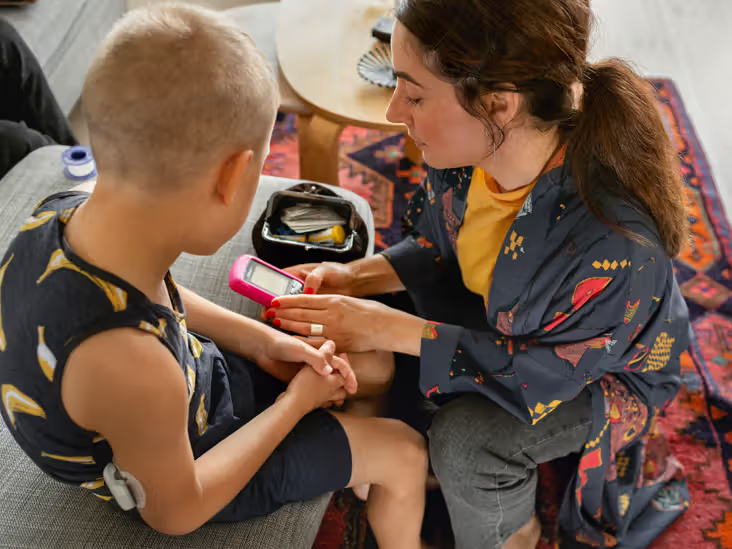
Stem Cell Therapy for Type 2 Diabetes: Understanding the Process and Success Rates


Type 2 diabetes (T2DM) is a widespread chronic condition characterized by high blood sugar levels due to insulin resistance or insufficient insulin production. Managing T2DM typically involves medication, lifestyle changes, and regular blood sugar monitoring. However, for those seeking an alternative approach, stem cell therapy has gained attention as a potential solution to alleviate symptoms and enhance quality of life. While it doesn’t provide a cure, stem cell therapy for Type 2 diabetes offers a promising way to slow the disease's progression and minimize complications.
Type 2 diabetes can impact various parts of the body, leading to symptoms and complications that significantly affect daily life. Common symptoms include:
Without adequate treatment, T2DM can also lead to severe complications, such as:
If you’re experiencing any of these symptoms, you may want to consider exploring stem cell therapy to mitigate the progression of these conditions.
Type 2 diabetes develops when the body becomes resistant to insulin or when the pancreas doesn’t produce enough insulin. While the exact cause remains unknown, factors like genetics, excess weight, and an inactive lifestyle are known to contribute to its onset. Addressing these factors through lifestyle changes, medication, or alternative treatments like stem cell therapy can be beneficial.
Stem cell therapy is an innovative approach that uses a patient's stem cells to address underlying conditions in Type 2 diabetes. The therapy involves harvesting stem cells, typically from bone marrow, and processing them to activate regenerative capabilities. These stem cells are then reintroduced to the patient to target areas affected by diabetes, such as damaged tissues or inflammatory sites, to slow the progression of the disease and potentially restore some functions.
TruStem Cell Therapy, for instance, uses bone marrow-derived stem cells for diabetes treatment. Bone marrow (BM) is a rich source of hematopoietic stem cells (HSCs) and mesenchymal stem cells (MSCs), which have unique healing properties:
These stem cells are processed and activated before re-administration, allowing them to target specific areas that need repair or immune regulation. Through this approach, patients may experience a stabilization of blood sugar levels, reduced fatigue, and better wound healing.
The stem cell treatment process involves three main steps:
Stem cell therapy aims to slow T2DM progression, and while it doesn’t cure the disease, many patients report notable improvements in quality of life, including:
These benefits arise as stem cells address inflammation, repair tissue, and modulate the immune response, helping to mitigate some symptoms and complications of diabetes.
Research suggests that stem cell therapy for Type 2 diabetes can have a success rate of approximately 70–80%. Some studies indicate that stem cell therapy can:
However, it’s important to have realistic expectations. Stem cell therapy is not a cure for Type 2 diabetes, but it can offer relief from symptoms and a pathway to improved health.
The timeline for seeing results from stem cell therapy varies. Each patient responds differently; for some, noticeable changes may take weeks or months. Factors like the individual’s health, severity of symptoms, and lifestyle choices can influence the rate of improvement.
Stem cell therapy is generally well-tolerated, with few side effects. Patients might experience temporary soreness and bruising at the harvesting site. Serious complications are rare, though some risks include:
Choosing a reputable provider like TruStem Cell Therapy, which adheres to FDA guidelines and employs skilled clinicians, can help minimize these risks.
For those who may not be eligible for stem cell therapy, a pancreas transplant remains a more established option with a high technical success rate of 90–95%. However, this procedure is rigorous, and suitable donor pancreases are limited. Stem cell therapy, while still evolving, offers a less invasive alternative with promising results.
While stem cell therapy doesn’t cure Type 2 diabetes, it holds potential as a safe and effective way to manage symptoms and improve overall quality of life. From stabilizing blood sugar levels to reducing fatigue, stem cell therapy for Type 2 diabetes may be a worthwhile option for those looking to complement their treatment plan. If you're interested in learning more, contact one of our Patient Advocates at Shiney Wellness to explore if stem cell therapy is right for you.

